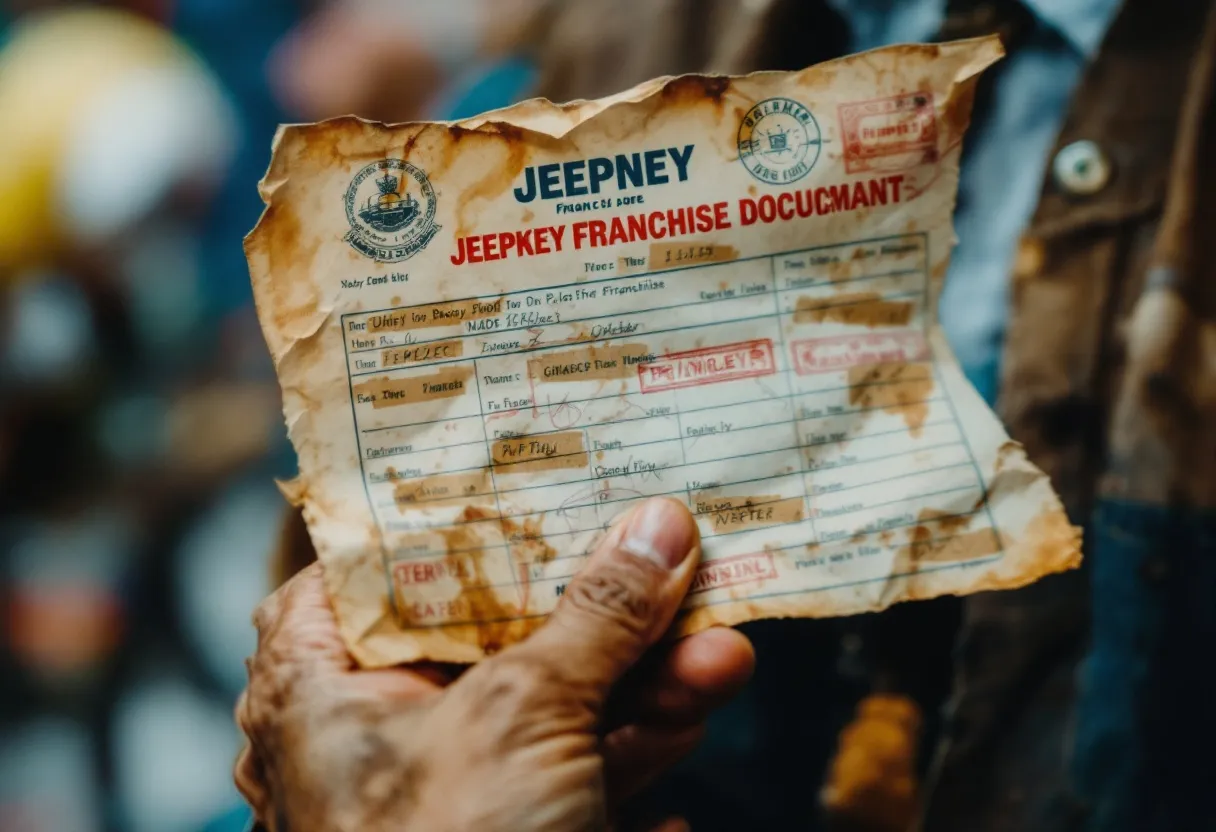Ah, the Philippine jeepney. More than just a mode of transportation, it’s practically a rolling art exhibit, a cultural icon, and a testament to Filipino ingenuity. But behind all the vibrant colors and chrome, there’s a whole world of regulations, franchises, and bureaucratic hurdles that jeepney operators have to navigate. So, you wanna run a jeepney? Buckle up, because it’s gonna be a ride!
Understanding the Jeepney Franchise System
The jeepney franchise system is, well, let’s just say it’s “unique.” Traditionally, it’s been a system of individual franchises – one jeepney, one franchise. This has led to a fragmented industry, difficult to regulate and control. Think of it like a bunch of independent artists, all doing their own thing – beautiful, but not exactly organized.
But things are changing. The Public Utility Vehicle Modernization Program (PUVMP) is pushing for consolidation – encouraging jeepney operators to form cooperatives or corporations. Why? To make the industry more efficient, safer, and environmentally friendly. The idea is that larger entities can better afford modern, Euro-4 compliant vehicles and implement standardized operations.

Types of Jeepney Franchises
Now, let’s dive into the nitty-gritty. What kind of franchises are we talking about here? There are a couple of main types you’ll encounter:
- Individual Franchises: These are the traditional franchises, where each jeepney operates under its own authority. They’re becoming less common as the PUVMP rolls out. I remember talking to one jeepney driver, Mang Tonyo, who’s been driving the same route for 30 years. He was so proud of his jeepney, every dent and scratch telling a story. But even he admitted that the individual franchise system had its challenges.
- Cooperative/Corporate Franchises: This is the wave of the future (or so the government hopes). Under this model, jeepneys operate as part of a larger organization, sharing resources and responsibilities. The idea is that it’s easier to manage and regulate a few large entities than hundreds of individual ones.
The Land Transportation Franchising and Regulatory Board (LTFRB) is the main agency overseeing jeepney franchises. They’re the ones who issue permits, set regulations, and enforce compliance. So, if you’re planning to get into the jeepney business, get ready to become very familiar with the LTFRB.
Fees, Permits, and Requirements: The Paper Trail
Okay, let’s talk about the stuff that makes most people groan: paperwork and fees. Getting a jeepney franchise involves a whole bunch of documents, applications, and payments. Here’s a general overview of what you’ll need:
- Application Form for CPC (Certificate of Public Convenience): This is the main application form you’ll need to fill out. Get ready to provide a lot of information about yourself, your jeepney, and your proposed route.
- LTO OR/CR of Authorized Units: You’ll need to provide the official receipt (OR) and certificate of registration (CR) of your jeepney from the Land Transportation Office (LTO).
- Certificate of Business Name from DTI or SEC: If you’re operating as a business, you’ll need to register your business name with the Department of Trade and Industry (DTI) or the Securities and Exchange Commission (SEC).
- Operators Data Sheet with Valid Driver’s License: You’ll need to provide information about the jeepney operator, as well as valid driver’s licenses for all authorized drivers.
- Proof of Financial Capability: If you’re joining a cooperative or corporation, you’ll likely need to show proof that you have sufficient funds to upgrade your fleet. Some cooperatives require a certain amount in the bank per modern jeepney.
And of course, there are the fees. These can vary depending on the type of franchise, the route, and other factors. Be prepared to shell out money for application fees, processing fees, and other charges. Honestly, sometimes it feels like you need to be a lawyer just to understand all the requirements!
Obligations of Franchise Holders: Playing by the Rules
Once you’ve got your franchise, it’s not just smooth sailing from there. You’ve got obligations to fulfill. These include:
- Maintaining Your Vehicle: You’re responsible for keeping your jeepney in good working condition, both mechanically and aesthetically. That means regular maintenance, repairs, and keeping it clean and presentable.
- Following Traffic Rules: This should be a no-brainer, but you need to obey all traffic laws and regulations. No reckless driving, overspeeding, or ignoring traffic signals.
- Adhering to the Approved Route: You can only operate on the route specified in your franchise. No deviating from the designated path unless you have special permission.
- Charging the Correct Fare: You can only charge the fare approved by the LTFRB. No overcharging or taking advantage of passengers.
- Complying with LTFRB Regulations: You need to stay up-to-date on all LTFRB regulations and comply with them. This includes things like attending seminars, submitting reports, and undergoing inspections.
Tips for Navigating the Regulatory Landscape
Alright, so how do you make sense of this whole mess? Here are a few tips for navigating the regulatory landscape:
- Do Your Research: Before you even start the application process, do your homework. Understand the requirements, fees, and obligations involved. Talk to other jeepney operators, join relevant organizations, and visit the LTFRB website.
- Get Organized: Keep all your documents in order. Make copies of everything, and keep track of deadlines and requirements. A little organization can save you a lot of headaches down the road.
- Seek Assistance: Don’t be afraid to ask for help. The LTFRB has staff who can answer your questions and guide you through the process. You can also consult with lawyers or consultants who specialize in transportation regulations.
- Be Patient: The application process can take time. Don’t get discouraged if things don’t happen overnight. Be persistent, follow up on your application, and stay positive.
- Comply with Regulations: Once you’ve got your franchise, make sure you comply with all regulations. This will help you avoid penalties, fines, and other problems.
The Future of Jeepney Franchises
The jeepney franchise system is in a state of flux. The PUVMP is shaking things up, and the future is uncertain. But one thing is clear: the jeepney is here to stay. It’s too deeply ingrained in Filipino culture to disappear completely.
The challenge is to find a way to modernize the industry while preserving the jeepney’s unique character and providing a sustainable livelihood for jeepney operators. It’s a complex issue with no easy answers. But with collaboration, innovation, and a little bit of Filipino ingenuity, I’m confident that we can find a solution that works for everyone.
So, there you have it – a glimpse into the world of jeepney franchises. It’s a world of regulations, requirements, and challenges, but it’s also a world of passion, creativity, and resilience. And who knows, maybe one day you’ll be cruising down the streets of Manila in your own jeepney, bringing a smile to the faces of your passengers. Mabuhay!

